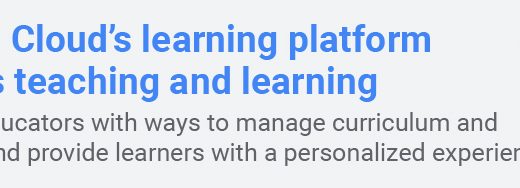To improve student wellbeing, Alabama invests in mental health coordinators
Alabama schools were just starting a new venture to help students find mental health resources when COVID hit.
Mental health service coordinators are now in place in nearly all of Alabama’s 138 school districts; they help smooth the path so more students can find resources. The new role came at a key time, officials say, and will help more communities wrestle with the best way to help more students.
“We know firsthand of several situations where, had some people not been in place, we would have lost several children,” said Kay Warfield, of the Alabama Department of Education, who directs the coordinators from the state level.
Schools around the country are trying to staff up counselors and therapists, but experts say Alabama’s creation of a bridge role could be a model. Mental health service coordinators set up mental health awareness events, hold small group sessions with students and connect families with professional mental health services.

“It’s not a competition. We have to collaborate,” said Emily Herring, a mental health service coordinator in Fairfield, a small district in the Birmingham metro area, of partnering with colleagues to help students find services.
“Someone who is focused on customizing and coordinating supports to better meet students’ evolving needs is an important function,” said Robert Balfanz, director of the Everyone Graduates Center for Johns Hopkins University’s School of Education.
“Too often districts and schools fall back on a one size fits all approach,” he said, for example, assigning every school a counselor or a social worker. “But some schools may need this, and some other schools may need different types of student supports, and what schools need in the fall might be different from what they need in the spring.”
Related: College students to administrators: Let’s talk about mental health
The coordinator position started as a state-funded pilot in 102 school districts during the 2020-21 school year. Districts had to apply for a $40,000 grant for the coordinator’s salary and agree to provide the coordinator a space and the freedom to interact with students, teachers and parents.
During the 2021-22 school year, 114 school districts received a grant and Warfield cobbled together enough money to add a dozen more. Her office conducts all of the training, but districts must foot the cost for coordinators to attend.
Students and schools really need the added focus on mental health after two years of COVID-related challenges, she said.
According to survey data collected during the COVID-19 pandemic by the Centers for Disease Control and Prevention, more than a third of high school students said they had poor mental health and just under half said they had persistent feelings of sadness or hopelessness during the past year.

The state is still gathering evidence to determine how well the program is working, Warfield said. Officials are looking at three measures – rates of absenteeism, rates of suspension and promotion and retention in third, sixth and ninth grades – to gauge the effectiveness of the coordinators.
During the 2018-19 school year, 11 percent of Alabama students were chronically absent, meaning they missed 18 or more days. Some student populations, including those who were economically disadvantaged, disabled, Black and American Indian, had rates higher than 12 percent. Some individual schools had absentee rates up to 48 percent.
Dorann Tanner, with Alabaster City Schools, a growing district south of Birmingham, said COVID restrictions and the uprooting of predictable routines were hard on everyone.
When it was time to come back to normal, she said, “I think we realized that it’s not just a light switch.”
“You can’t just go from being at home and all the precautions and all the anxiety and stress and worry that was just everyone was feeling and then just come back and be like, ‘Oh, hey, the doors open. I’m good.’ ”
Related: Making sure campus counseling centers serve LGBTQ+ students and others
Tanner leads support services for Alabaster City’s 6,200-student district and has many years of experience as a social worker in the district.
She said adding a mental health services coordinator was a natural progression so the district could ease connections between families and mental health resources.

Debbie Brinson started as the district’s mental health services coordinator in December 2020. “Miss Debbie,” as she is called, connects students and parents with mental health resources in the community.
“Navigating the mental health world can be confusing for all of us at times,” she said.
Brinson has been a part of the Alabaster community for a long time, so she is familiar with which practice or therapist might be the best fit.
If a student is referred to Brinson by a counselor or teacher, she’ll contact the child’s parent to see what type of resources they may need and whether they’re receptive to assistance with their mental health.
“There’s still a stigma in regards to mental health,” she said.
Read the series
Educators and others are experimenting with new ways to address students’ mental health needs — or reinvent old strategies.
Parents sometimes need some help understanding how services could help their child. Connecting with parents is crucial, she said, for good outcomes for students.
“The value of being able to identify and get services earlier for a child helps with the outcome and is going to help them when they become an adult – learning those skills and how to deal with something,” she said.
“Our kids go through a lot,” Escambia County Schools mental health services coordinator Marlo Young said. “One of my main goals was making sure that even when our community mental health centers may not have someone [available], our students have a safe person that they can talk to.”
Related: Schools struggle to help students return to class after a mental health crisis
Young, who just completed her second year as Escambia County’s mental health services coordinator, said she sees her role not only as a resource for the 4,000 students in the district but also as an advocate for raising awareness about the importance of taking care of your mental health in the greater community.
Escambia is a rural county in southern Alabama with just 36,000 residents. Young was born and raised there. During her first year as a coordinator, she organized a mental health awareness walk in Atmore, and while turnout was good, this year, she said, was even better.
Knowing who’s who and where help and support are available is central to the job
“We had a lot of support from the mayor, the police department, the Sheriff’s Department,” she said, as well as local businesses.

Laura Bruce, who serves as coordinator for another small district, Ozark City Schools, organized a poetry night for students where they could share facts about mental health. She also coordinated an “Aware Fair on the Square” event, where she arranged for free inflatables, rides and outreach from local social service agencies.
“People got a chance to find out about resources they never knew existed around here,” she said.
Related: Nation’s skeletal mental health network will be severely tested
Beyond connecting families with professional help and galvanizing support for mental health awareness in their communities, coordinators adapt their skills to what their local schools need.
Young holds programs in the schools, bringing in mental health organizations to talk with students about bullying and suicide prevention. She’s there if a crisis arises, helping coordinate care and resources to ensure a student gets the help they need. She also helps teachers talk through a situation.
But she can’t do the work alone. Rural community health centers in her area of south Alabama might not always have staff available when help is needed, and as service coordinators join systems, they also have advocated for additional staff to help them meet growing needs.
“We know firsthand of several situations where, had some people not been in place, we would have lost several children.”
Kay Warfield, of the Alabama Department of Education, who directs the coordinators from the state level
Young said she was happy district leaders hired three social workers at the start of the 2021-22 school year, one for each of the three feeder patterns in the county.
Historically, social workers have not been a part of Alabama’s schools, and only 51 of Alabama’s 138 school districts and two of eight charter schools employed a social worker during the 2021-22 school year.
No school district meets the National Association for School Social Workers’ recommendation to employ one social worker in every school building with a ratio of no more than 250 students per school social worker.
Ozark City has no school-based social workers, which means all adults are expected to help keep an eye on students, said Bruce, the district coordinator.
“A lot of times, the guidance counselors will call me to ask me, ‘Hey, do you just mind speaking to this young lady or this young man?’”
“Someone who is focused on customizing and coordinating supports to better meet students’ evolving needs is an important function.”
Robert Balfanz, director of the Everyone Graduates Center for Johns Hopkins University’s School of Education
Bruce goes into each school at least once a week to hold small group workshops with students who have had discipline problems. “I’m there to encourage them to make better choices,” she said.
Alabama schools have also struggled to provide enough counselors. The statewide ratio is 389-to-1, well above the American Counseling Association’s recommended ratio of 250-to-1.
Just eight school districts met the recommended ratio during the 2021-22 school year.
Related: Counseling kids during the coronavirus: A tough job made even tougher
Balfanz said tracking outcomes should help state leaders “figure out if the student supports are making a difference, and if not, then they get feedback that says perhaps a plan B is needed.”
COVID made it difficult to collect hard data on attendance, Warfield said, so she’s wary of using data from the past two school years to evaluate the coordinators’ effectiveness so far, but hopes to evaluate their efforts this fall.
Coordinators will be in every school district, charter school and statewide magnet school for the 2022-23 school year, Warfield said, with salaries funded by various pots of state money: $4.7 million in direct funding and the rest from money directed to improve school climate and culture.
Lawmakers also have funded district coordinators for the 2023-24 school year.
“We all have mental health,” Bruce said. “How do you cope with bad news, good news? How do you look at your day? Do you look at it half full? Half empty?”
AL.com education editor Ruth Serven Smith contributed to this story.
This story on mental health coordinators was produced by The Education Lab at AL.com, as part of the project “Supporting students: What’s next for mental health,” in collaboration with The Hechinger Report, a nonprofit, independent news organization focused on inequality and innovation in education, The Christian Science Monitor and the Education Labs at The Dallas Morning News, The Fresno Bee, The Post and Courier and The Seattle Times. Sign up for the Hechinger newsletter.



